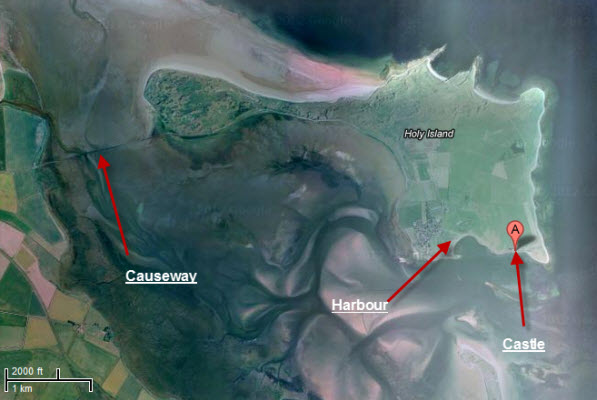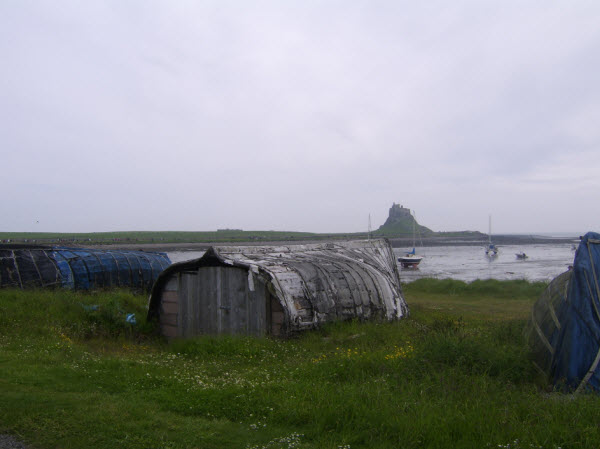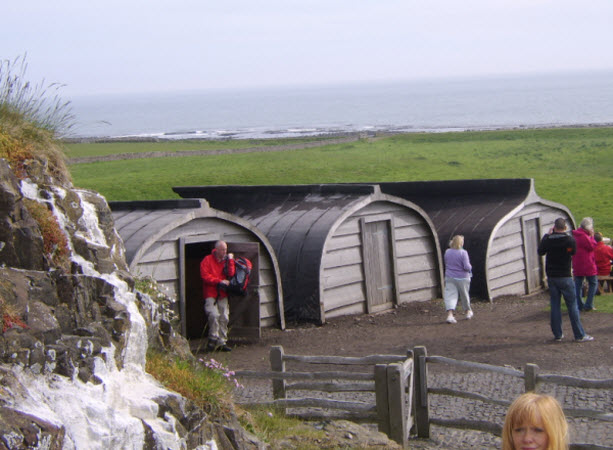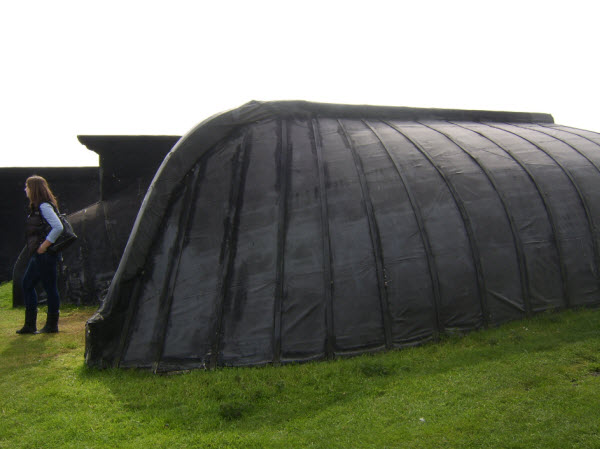The Lindisfarne Boat Sheds - How to persuade your wife to come along too!
Imagine you wanted to go and see some really unusual sheds but you knew that your wife and friends wouldn't really understand.
I mean it would be a bit difficult to explain to your friends that you travelled several hundred miles just to see some sheds wouldn't it?
A colleague of mine Paul Ford recently did just that. Paul wanted to go and visit the Lindisfarne boat sheds in the North East of England. He came up with this great cover story about the historical attractions of the area and the natural beauty of the coastline to persuade his wife to come with him. The journey to reach the sheds involved travelling over 300 miles from Kent to a small area on the coast of Northumberland, further North than Newcastle-upon-Tyne, almost reaching the border of Scotland and England.
I'd like to say a big thank you to Paul for his pictures and first hand account of his visit. But first of all lets find out a bit more about where the Lindisfarne boat sheds are located.
Where is Lindisfarne?
Lindisfarne, also known as Holy Island is tidal island situated on the North East Coast of England about 60 miles up the coast from Newcastle-upon-Tyne. The island is about 4km long by 2km wide and for 2 or 3 hours either side of high tide the causeway that links the island to the mainland is submerged beneath the North Sea.
Holy Island is steeped in history with a monastery dating back to AD635, a small castle and some spectacular coastal scenery. All great excuses for Paul to visit and hide his true purpose of finding out more about the boat sheds.
 Aerial photo of Lindisfarne showing the Castle, Harbour and Causeway
Aerial photo of Lindisfarne showing the Castle, Harbour and Causeway
What are the Lindisfarne boat sheds?
There is a tradition in the North East of England of fishermen using redundant herring boats as storage sheds for their nets and other equipment. As the fishing industry has changed and evolved over the years the places where these traditional huts survive has diminished but Holy Island is one of the few places where they remain in abundance. There are two main sites on the island where you can see the Lindisfarne boat sheds.
The harbour boat sheds
In the sheltered harbour where the traditionally the boats were pulled ashore onto the beach are 10 or 15 sheds in various states of repair (I will have to send Paul back to do a detailed count to find out exactly how many there are). These sheds are still used by the fishermen and I really wanted to get a look inside these sheds but there wasn't any of the fishermen around at the time so hopefully I'll get some more pictures from a more fortunate visitor in the future.
 Boat sheds in Lindisfarne harbour
Boat sheds in Lindisfarne harbour
The upturned boats are covered in tar for waterproofing and seem to be in that state of decay that generally surrounds huts and buildings close to the sea. This along with the curvy shape results in buildings that have great presence and character. As witnessed by the huge number of pictures that you will find if you go into Google Images and type in 'Lindisfarne Boat sheds'. The condition of the boat sheds around the harbour is quite a contrast to the condition of the boat sheds up near the entrance to the castle.
 Looking across the harbour towards Lindisfarne castle
Looking across the harbour towards Lindisfarne castle
The Castle boat sheds
The castle boat sheds are on land owned by the National Trust and are located near the entrance to Lindisfarne castle. The original sheds in this location were installed by the Architect Sir Edwin Lutyens for the owner of the castle Edwin Hudson as part of a major refurbishment of the castle around the year 1908.
 The three sheds up by the entrance to the castle
The three sheds up by the entrance to the castle
However tragedy struck in October 2005 when the sheds were set on fire in an arson attack. The fire engine was on the mainland and couldn't reach the island until the tide had gone out and two of the three sheds were burn't beyond repair with the third severely damaged.
The sheds were replaced fairly quickly the following year. An old herring boat that was to be disposed of was found in the Leith docks in Edinburgh. The boat was sawn in half and the two pieces used to replace the fire damaged sheds.
Looking at these sheds they are in much better condition than those by the harbour. The castle sheds also lack a bit of the character and atmosphere of the harbour sheds that is only really acquired with time and neglect!
 The sheds by the castle are in a lot better condition than the harbour sheds
The sheds by the castle are in a lot better condition than the harbour sheds
A visit to Lindisfarne is well worth while
The collection of boat sheds is an unusual and extremely photogenic location.
If you visit this area I hope you don't have to resort to subterfuge as Paul did. Now you have read this article you will be able to show the pictures to your 'better half' and they should be more than persuaded that the sheds are worth a visit. They might also like to explore the monastery, the castle or go for a walk along the heritage coastline as well. ;-)

Keep in touch with our monthly newsletter
Shed Building Monthly




